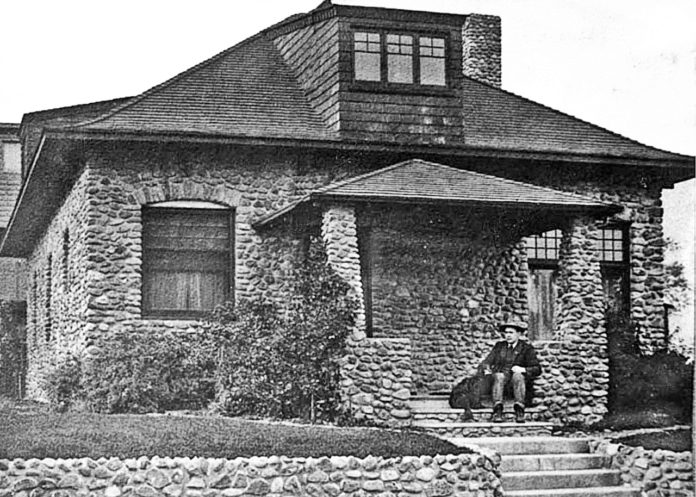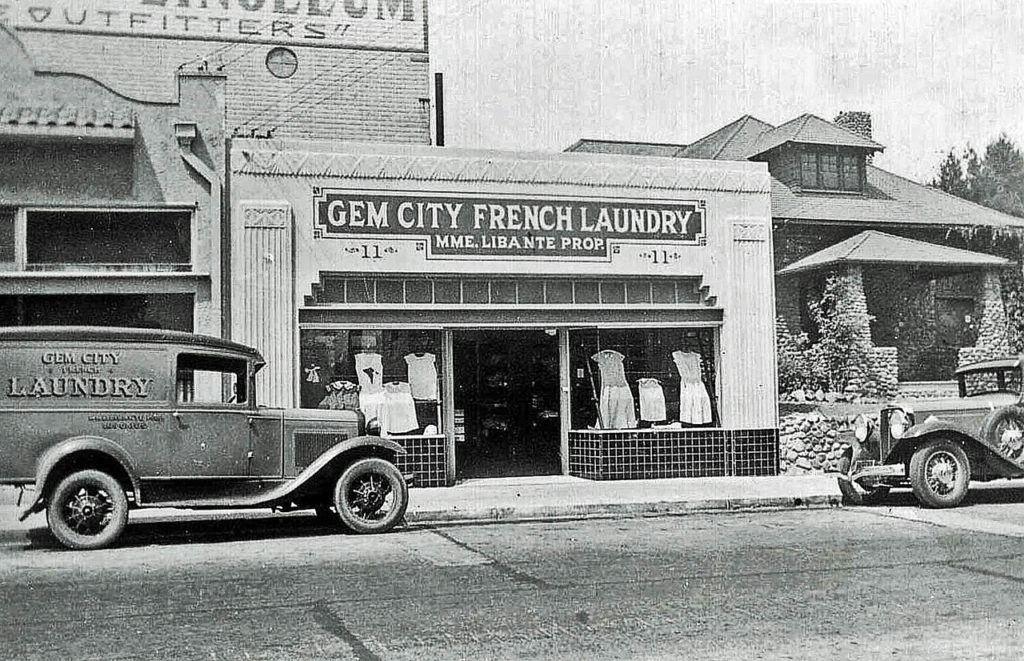
Have you ever wondered about the little stone house at 15 University Avenue? In the middle of downtown, it seems oddly out of place. In fact, it’s the only residence within the boundaries of the Los Gatos Historic Commercial District.
The house is a 1906 Craftsman bungalow, a style embraced by many Californians in the early 20th century. Natural materials were highly popular design elements back then, since they helped to reflect a building’s rural surroundings. While stones taken from Los Gatos Creek were often used to build walls, foundations, and chimneys here in town, this is the only wood frame house with an exterior covered in rounded rocks. Although it appears that the rocks are structural, they’re actually just decorative.
The single-story bungalow with a large attic was constructed for Charles and Alice Wagner, who arrived here from Pennsylvania in 1904. Both Charles and Alice were photographers, and they set up a studio in their home. Charles became famous around town for capturing the glory of giant redwood trees. He also used the exterior of their stone house as an interesting backdrop for some group photos. Alice hand colored his images using oil paints, and the couple’s work was often displayed in local shop windows.

On Nov. 11, 1920, Los Gatos held a big celebration on the first anniversary of Armistice Day (now known as Veteran’s Day), the date the Treaty of Versailles was signed ending World War I. The town welcomed home 260 servicemen with a barbecue, dancing and outdoor games. Charles Wagner had the honor of winning first place in the “Fat Men’s 50-Yard Dash.” Unfortunately (or maybe fortunately), no photograph exists of that event.
In 1930-31, the house was purchased by Jacques and Therese Libante, natives of France who emigrated to San Francisco. Like so many city residents who became tired of the cold and fog, the Libantes moved to Los Gatos for the favorable climate. They thought it would be especially helpful for their son Andre, who suffered from asthma.
The Libantes had experience in the laundry industry in San Francisco. They opened a shop on East Main Street in Los Gatos and quickly built a reputation for their painstaking work cleaning lace and fine fabrics. Their business grew, and in 1934 they moved it into a beautifully designed Art Deco building, which they constructed in the garden adjacent to their home. It featured large picture windows so they could display their work. Jacques had a custom starch formula for the shirts of each of his gentlemen clients. They purchased a truck so their hand-laundered and carefully-pressed goods could be delivered to Los Gatos homes.

Therese Libante is remembered for having a beautiful rose garden which she tended when she wasn’t busy ironing. She was careful to wear bloomers under her skirt when working on her roses, and she reportedly didn’t mind being teased about these colorful fabrics coming into view when she bent over to prune her prized flowers.
Jacques, who was 24 years older than Therese, passed away in 1960. Therese was listed as the homeowner in 1991 in the Town’s application for a National Register of Historic Places designation. She died five years later. The Stone House is still owned by the Libante family, although it is no longer occupied as a full-time residence.
Alan Feinberg is a Los Gatos town historian and founder of the LOST Gatos Project. His mission is to generate enthusiasm among Los Gatos residents for remembering and preserving our town’s unique character and historic treasures before they’re lost forever. For more information visit www.lostgatos.com.









